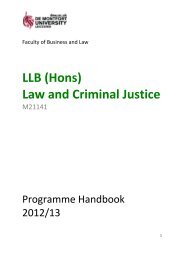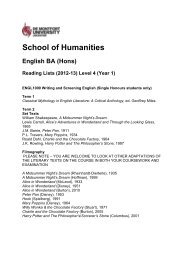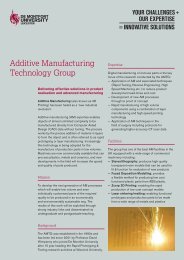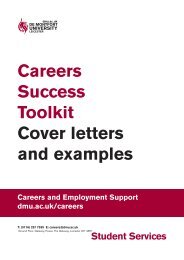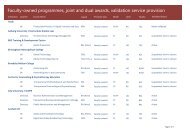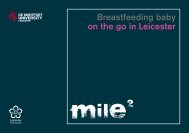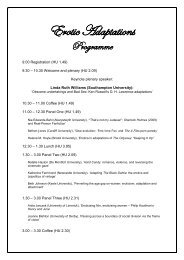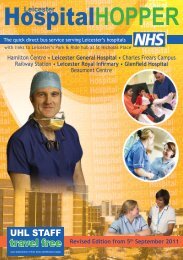Evaluation of the Crash Course March 2009 - De Montfort University
Evaluation of the Crash Course March 2009 - De Montfort University
Evaluation of the Crash Course March 2009 - De Montfort University
You also want an ePaper? Increase the reach of your titles
YUMPU automatically turns print PDFs into web optimized ePapers that Google loves.
For self-reported behaviour on having:<br />
• Gone with a driver who'd used drugs recently: (top 10% most deprived more<br />
<strong>of</strong>ten)<br />
• Not worn a seat belt in <strong>the</strong> back seat: (top 10% more <strong>of</strong>ten)<br />
• Watched <strong>the</strong> driver use a mobile: (top 10% more <strong>of</strong>ten)<br />
• Been driven by someone who had no licence: (top 10% more <strong>of</strong>ten)<br />
• Driven with a driver who had been drinking: (SOAs in top 20% less <strong>of</strong>ten)<br />
On <strong>the</strong> knowledge <strong>of</strong> how to stay safe:<br />
• The maximum positive score for three things as a passenger to keep safe:<br />
(SOAs in top 20% scored lower)<br />
On <strong>the</strong> attitude questions:<br />
• Driving at 28 miles an hour in a 30 mile an hour area: (both top 10% and<br />
below top 30% perceived this as more “OK”)<br />
• Driving at 45 miles an hour in a 30 mile an hour area: (a mix <strong>of</strong> top 10% and<br />
top 20% saw this as more “OK”)<br />
• How would you feel being driven in a car going 98 on a motorway?: (a mix <strong>of</strong><br />
top 10% and top 20% felt <strong>the</strong>y would be more “scared/anxious”)<br />
• How would you feel being driven home by a friend who has had a bit too<br />
much to drink?: (young people in wards outside <strong>the</strong> top 30% most deprived<br />
reported feeling least “scared/anxious”)<br />
Broadly this shows that young people attending education or training in <strong>the</strong> most<br />
deprived areas were more inclined towards risky behaviours but also that those least<br />
deprived had at least ambivalent attitudes towards speeding, and drinking and<br />
driving.<br />
4.7 Young people’s opinions about <strong>the</strong> <strong>Crash</strong> <strong>Course</strong><br />
For those young people who completed questionnaires after <strong>the</strong>y had seen <strong>the</strong><br />
presentation, <strong>the</strong>re was a set <strong>of</strong> options on reactions to <strong>the</strong> course. They were asked<br />
to tick all <strong>the</strong> options that applied to <strong>the</strong>ir own responses. Figure 4.4 below shows <strong>the</strong><br />
range <strong>of</strong> responses. The numbers expressing resistance (“I didn’t really believe<br />
<strong>the</strong>m” or “Waste <strong>of</strong> time.”) are extremely small: 15 and 14 respectively. The number<br />
finding <strong>the</strong> presentation “too scary” was also small at 34. The vast majority found <strong>the</strong><br />
session thought provoking, helpful and informative about how <strong>the</strong>y could stay safer.<br />
36





